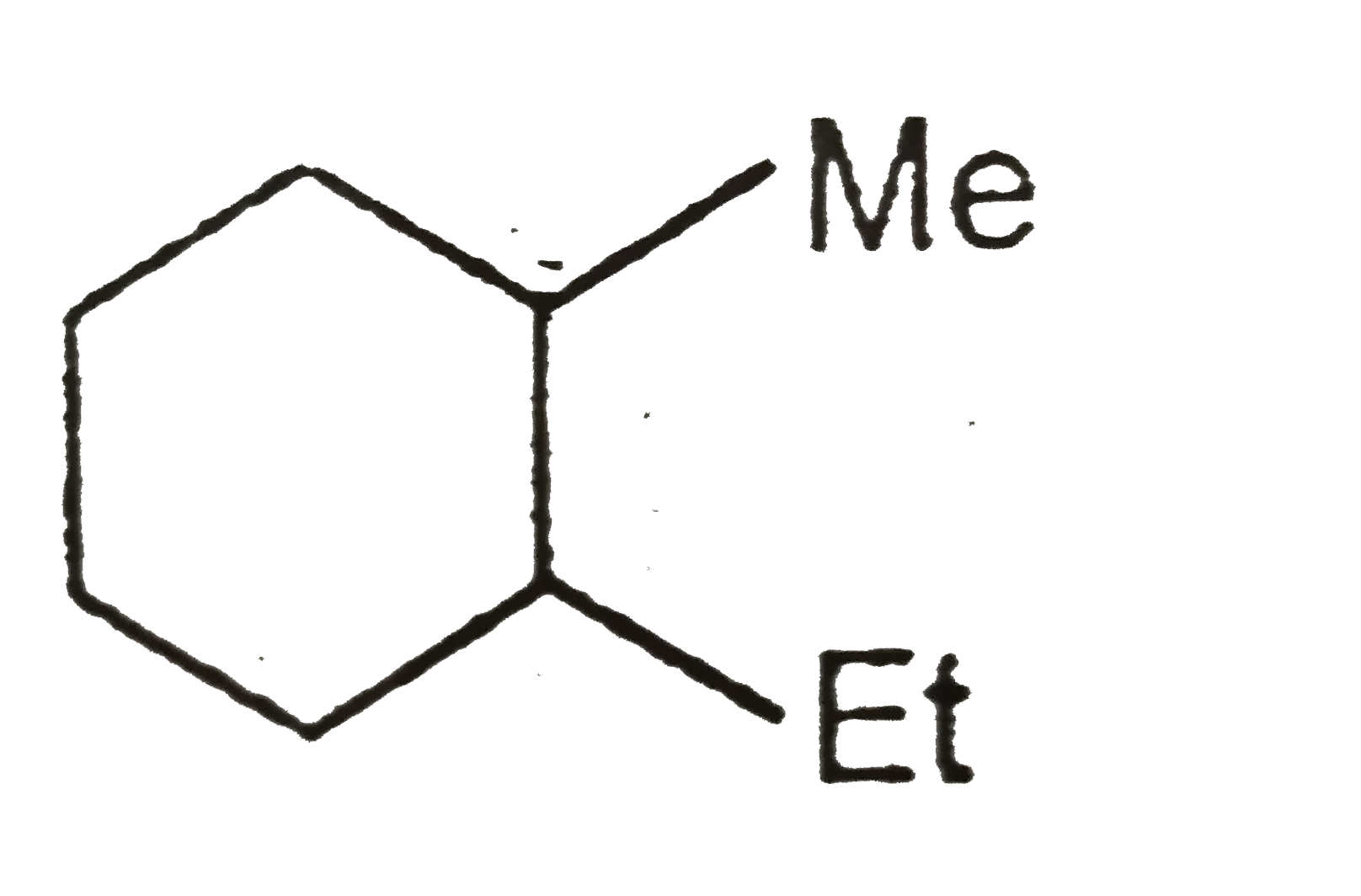How many geometrical isomers are possible [Co(acac)2BrCl]Θ are:
4
3
6
2
The correct Answer is:D
To determine the number of geometrical isomers for the coordination compound (Co(acac)2BrCl)Θ, we will follow these steps:
Step 1: Identify the Coordination Number and Geometry
The coordination number of cobalt in this complex is 6 because it is surrounded by two bidentate acetylacetonate ligands (acac) and two monodentate ligands (Br and Cl). The geometry of a coordination complex with a coordination number of 6 is typically octahedral.
Hint: The coordination number is determined by counting the number of donor atoms surrounding the central metal ion.
Step 2: Determine the Types of Ligands
In this complex, we have:
- Two bidentate ligands (acac) which can coordinate through two oxygen atoms.
- Two monodentate ligands (Br and Cl) which can coordinate through one atom each.
Hint: Identify the ligands and their coordination modes (bidentate or monodentate) to understand how they can arrange around the central metal.
Step 3: Analyze Possible Geometrical Arrangements
In an octahedral complex, the arrangement of ligands can lead to different geometrical isomers. The two bidentate ligands (acac) can either be adjacent (cis) or opposite (trans) to each other. The positions of the Br and Cl ligands can also affect the isomerism.
- Cis Isomer: The two acac ligands are adjacent to each other.
- Trans Isomer: The two acac ligands are opposite each other.
Hint: Visualize the octahedral structure and consider the positions of the ligands to identify possible isomers.
Step 4: Count the Geometrical Isomers
For the given complex:
- Cis Isomer: Both acac ligands are next to each other, and Br and Cl can occupy the remaining positions.
- Trans Isomer: The acac ligands are opposite each other, with Br and Cl also occupying opposite positions.
Thus, there are two geometrical isomers:
1. Cis isomer
2. Trans isomer
Hint: Remember that geometrical isomers arise from different spatial arrangements of ligands around the central metal ion.
Conclusion
The total number of geometrical isomers for the complex (Co(acac)2BrCl)Θ is 2 (cis and trans).
Final Answer: 2 geometrical isomers.
The coordination number of cobalt in this complex is 6 because it is surrounded by two bidentate acetylacetonate ligands (acac) and two monodentate ligands (Br and Cl). The geometry of a coordination complex with a coordination number of 6 is typically octahedral.
In this complex, we have:
- Two bidentate ligands (acac) which can coordinate through two oxygen atoms.
- Two monodentate ligands (Br and Cl) which can coordinate through one atom each.
In an octahedral complex, the arrangement of ligands can lead to different geometrical isomers. The two bidentate ligands (acac) can either be adjacent (cis) or opposite (trans) to each other. The positions of the Br and Cl ligands can also affect the isomerism.
- Trans Isomer: The two acac ligands are opposite each other.
For the given complex:
- Cis Isomer: Both acac ligands are next to each other, and Br and Cl can occupy the remaining positions.
- Trans Isomer: The acac ligands are opposite each other, with Br and Cl also occupying opposite positions.
1. Cis isomer
2. Trans isomer
The total number of geometrical isomers for the complex (Co(acac)2BrCl)Θ is 2 (cis and trans).
Topper's Solved these Questions
- CO-ORDINATION COMPOUNDSBOOK - VK JAISWAL ENGLISHCHAPTER - CO-ORDINATION COMPOUNDSEXERCISE - SUBJECTIVE PROBLEMS
42 Videos
- CHEMICAL BONDING (BASIC)BOOK - VK JAISWAL ENGLISHCHAPTER - CHEMICAL BONDING (BASIC)EXERCISE - SUBJECTIVE PROBLEMS
54 Videos
- d-BLOCK ELEMENTSBOOK - VK JAISWAL ENGLISHCHAPTER - d-BLOCK ELEMENTSEXERCISE - ASSERTION-REASON TYPE QUESTIONS
32 Videos
Similar Questions
Knowledge Check
Geometrical isomers are possible for :
ACH3CH2−C∣∣NOH−CH2CH3BCH3CH2−C∣∣O−CH3CCH3CH2−C∣∣NOH−CH3DC6H5−C∣∣O−C6H5

How many geometrical isomer of (A) is possible?
View SolutionNumber of geometrical isomers possible of

View SolutionHow many geometrical isomers are possible for complex [Mab(AB)2]n±?
View SolutionHow many geometrical isomers are possible for [Zn(NH3)ClBrPPh3]− ?
View SolutionHow many type of geometrical isomers are possible for [M(NH3)BrCl(H2O)], where M is Pt+2 ?
View SolutionHow many geometrical isomers of this compound are possible ?

View SolutionHow many geometrical isomers of this compound are possible:

View Solution

